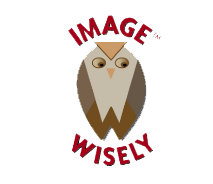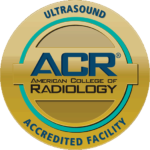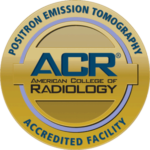
Robert Klein has been working for University Diagnostic Medical Imaging for 16 years as the Practice Administrator and Chief Operating Officer. In 2019 at the age of 60, he underwent a CT Calcium Scoring exam at UDMI that uncovered a heart condition that landed him in the hospital for open-heart surgery the very next week. Here is his story:
Tell us where this all began
Well, back in 2009 after talking to my doctor about my family history, he recommended I see a cardiologist to take a look at my heart. Heart problems run in my family – my parents, grandparents, aunts/uncles all had issues with their hearts. I was 50 years old that year, so my doctor really encouraged me to get a calcium score to establish some sort of baseline of how my heart was doing.
What did you learn about the results of that test?
I was told the results were higher than average but not high enough for me to do something about it. The truth is, I probably should have kept a closer watch on the progression of my condition after that but I didn’t. Back then, screening wasn’t as common and the technology wasn’t as good so it wasn’t immediately obvious to me to stay on top of it. Also, I felt fine. Or at least what I knew to be “fine”. Any ache/pain/ailment I felt I simply just blamed on the fact that I was getting older.
What led you to get another calcium score in 2019?
In 2019, UDMI got a new CT machine. Dr. Marc Prager who is the founder and Medical Director of UDMI knew the results of my test in 2009 and was also aware of my family history of heart disease. So, he encouraged me to take advantage of the new technology and get another calcium score.
I agreed.
What was the experience of the calcium score exam like?
It’s a painless exam that took no more than 5 minutes, so it was easy. There’s really no prep involved, though they said they needed me to be in the most relaxed state possible so told me not to drink any coffee that morning. That was the hardest part!
They put typical EKG style sticky probes on my chest to read my heart rate. They also took my blood pressure. They then put me in the machine for what felt like 2 minutes and it was over.
What did you learn about the results of the test?
Since I work at UDMI the radiologist immediately looked at my images and told me the news.
I was at high risk for a heart attack.
Wow.
An appointment was made for me to see a cardiologist the very next day.
How did you feel after hearing that?
I was shocked. I shouldn’t have been so shocked since it runs in my family but I had no idea my heart was in such bad shape. You think you would feel more symptoms or see more warning signs.
I really was a ticking time bomb and didn’t even know it.
What did the cardiologist do/say during your appointment?
I had a full workup which included an EKG, a physical examination, and an understanding of my personal and family history. The results of this led the cardiologist to refer me for a nuclear stress test for the following week.
What was the nuclear stress test like and what did the doctor say it showed?
The nuclear stress test was also painless. They put sticky leads on me that measured my heart rate and then asked me to run on the treadmill to watch what happens to it. They told me the results were within a normal range but that there was a slight indication that something was going on in one of the branches of my heart that they need to take a closer look at.
The cardiologist then recommended an angiogram which was scheduled for the next day at St. Francis Hospital.
Things were moving very quickly!
What was the angiogram like and what did it show?
An angiogram is done in the hospital because it’s a little more intense. You can be awake or sedated for it, I chose to be awake.
They snaked a tiny tube from my groin to my heart and injected contrast to evaluate the arteries for blockages. Once the tube is in place they put you into a machine and watch the dye travel through all the vessels surrounding your heart in real-time.
It was clear as day where the blockages were. I saw it for myself on the screen.
Then what happened?
At that moment they told me the blockage was significant and needed immediate attention. They said it could not go untreated. They gave me two choices, stents or a Coronary Auditory Bypass Grafts or CABG for short (pronounced “cabbage”). I elected for the CABG.
Two days later, I went in for surgery.
Again, everyone was moving with a sense of urgency.
Now for this, I was put to sleep! It’s major surgery. This involved a full sternotomy (they break your sternum to get to your heart) and four arterial grafts. It was a 6-hour surgery. A lot of little stitches need to be made in a tough area to work.
What is recovery like?
Recovery is what you make of it. It’s a bare minimum of 6 months to feel somewhat normal but that varies per person. I won’t lie, healing from the sternotomy wasn’t fun, I was broken in half and had to give it time and patience as it worked to fuse back together. But the alternative would have been far worse so I kept reminding myself of that. I went home 5 days after the surgery and did a lot of resting. There’s an 8 week no driving rule after you have a sternotomy so I went back to work after that period.
How do you feel today?
I feel good. It’s funny; I’ve always been a sufferer of sinusitis which made it hard to breathe. It made me feel stuffy all of the time. After I had the surgery on my heart, it all went away. I can breathe so much better. I never thought the two were related but I guess they are. The heart really is the control center. When it’s down other areas are compromised.
I also have a nifty scar! But it’s actually smaller than I would have imagined. The surgeon did such a good job so the scar is minimal.
What is follow up like?
It is different for everyone. In my case, I had a follow up with my cardiologist after the first 6 months. At my one year anniversary, I will need a follow-up stress test.
Did you have to make any lifestyle changes?
Lifestyle wise – I didn’t really have to make changes. Dietary restrictions are no different than anybody else – perhaps a little more emphasis on controlling unneeded fat and salt intake. They also tell you to get 3-5 hrs of vigorous cardio per week. The main change is learning to take advantage of having a clean bill of health! Though I don’t think I’ll be skydiving anytime soon…
Conclusion
I am a prime example of why calcium scoring is such an incredibly valuable exam. It truly saved my life.
If I didn’t work where I do and the machine wasn’t installed when it was, the outcome could have been very different. I know that.
I can basically live completely normally now. It’s just like when there’s a clogged sink and instead of using chemicals you have the plumber come in and put in a new pipe and it’s as good as new.
Having an easy exam like a calcium score in a high-quality environment with great doctors is a no brainer. For those that want to live a healthier later life, knowing your risks and dealing with your risks is so important. I can’t stress that enough.
I laid in a machine for 5 minutes and it saved my life. Maybe it could save yours too.
A Physician’s Perspective:
Many patients have an underlying cardiac disease that can go unnoticed for years. When there is a strong family history of cardiac disease or if a patient has abnormal blood work such as elevated cholesterol, their referring physician may recommend a heart screening examination such as an EKG, echocardiogram or CT coronary artery calcium score. In our experience, we have seen several totally asymptomatic patients who have significant calcium build-up in their arteries.
In Robert’s case, although he had a remote history of a mildly abnormal calcium score, he was asymptomatic for years. Once he underwent the calcium score at UDMI, we reviewed the imaging and calculated his score (called “Agatston score”) and were alarmed. To give you an idea, a normal score for his age would be less than 100. His was 1400. I firmly believe that Robert’s case is not so uncommon and that our CT exam and push for quick follow up saved his life.
I urge patients to be proactive about heart health. Talk to your doctor about the risk factors and if any apply and if they do, do not wait to get screened. The technology today is so advanced and should be utilized.
For more information about calcium scoring, consult the below resource or call University Diagnostic Medical Imaging.
CardioSmart – The patient education and empowerment resource from the American College of Cardiology.










